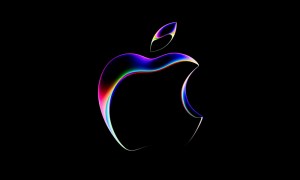

WWDC 2019 is here, and it kicked off with a few announcements about Apple’s next version of its MacOS, now called Catalina.
It wasn’t the most substantial update we’ve seen in a while, but the biggest theme to pull from the update regards how MacOS interacts with the iPad. From second-screen support to the next evolution of app support, MacOS Catalina takes some big steps toward making these two platforms work together better. Here’s everything that’s new with MacOS Catalina.
Sidecar brings second screen support for iPad
MacOS Catalina is also slated to offer second screen support for iPad. Officially known as Sidecar, the second screen support feature allows you do to set up your iPad next to your MacBook and use it just like you would another display. From the stage, Apple showed seamlessly dragging windows from the Mac screen over to the iPad screen. It may be as close to a touchscreen MacBook as we’ll ever get.
The second use is perhaps more interesting. Apple went on to mention that support for Apple Pencil within the Sidecar feature extends to “all apps that support tablets,” which included applications such as Adobe Illustrator. It’s all done wirelessly, so you can lean back with your iPad or pull it away from your MacBook without worry.
Project Catalyst helps bring iPad apps to the Mac

It is official: Apple is moving forward with Project Catalyst (formerly referred to as Project Marzipan), further unifying the iOS and MacOS app ecosystems. Project Catalyst is a step towards building a “universal app framework” for iOS and MacOS apps, to help encourage and facilitate the development of new apps for Apple devices. In the past, app developers had to submit different versions of their apps to each of the app stores for iOS and MacOS devices. But now, with Project Catalyst, app developers would only have to submit a single, merged version of their app that is compatible with both Apple operating systems.
Project Catalyst was officially announced to be available for use by developers starting today. The biggest feature regarding Catalyst is that it offers support for developing apps for Macs. In the quick demo shown during the keynote, enabling support for Mac app development was as simple as just checking a box next to the word “Mac.” Doing so seems to open up a Mac app-friendly template of features for developers to consider and build upon when making their apps.
iTunes is dead and three apps will take its place

Yes, the rumors are true: Apple’s beloved and long-running iTunes app will end its run with the launch of MacOS Catalina. iTunes will be replaced with three apps: Apple Music, Apple TV, and Apple Podcasts. The three new apps are expected to be based on Apple’s new app development framework, Project Catalyst, indicating that the apps will be similar to the ones already on iOS.
The Apple Music app was described as “blazingly fast” and as offering personalized music recommendations from a library of 50 million tracks. It was also noted that the Apple Podcasts app would feature machine learning-driven searching, to help users find the specific podcast they want, even if they don’t have very many details on it. MacOS Catalina also offers the Apple TV app, which features support for 4K HDR playback and Dolby Atmos audio.
Accessibility and voice control
The biggest accessibility feature to hit MacOS Catalina is the new Voice Control feature that allows users to control and navigate a Mac entirely just by using voice commands. The WWDC 2019 keynote presentation included a video demonstration of a Mac user utilizing the Voice Control feature to send messages and coordinate a trip with a friend (using Apple Maps).
The demo not only showed that the entire Mac user experience could be controlled with voice commands, but also showed that elements like on-screen menus could be labeled with numbers to make voice commands easier to manage. Instead of having to fully describe the photo you want to click on (which can be time-consuming), those who use Voice Control can just look at the number label next to it and say something like “Select number 32” instead.
New privacy and security features

MacOS Catalina is also coming with two new privacy and security features: Find My and Activation Lock. Find My is a combination of two apps: Find My Friends and Find My iPhone. Find My allows users to find their Macs if they’re lost or stolen, even if the Mac itself is offline. In fact, when it’s offline, a Mac with Find My will still send out a secure, Bluetooth beacon to help you locate it. The beacon is also anonymous and encrypted end-to-end. The Activation Lock feature basically renders your Mac useless (to thieves) if it ever gets stolen. Activation Lock is available for all Macs outfitted with a T2 security chip.
The developer beta will be available later today, which is free for anyone to download. As always, when it’s released this Fall, MacOS Catalina will be a free update for Macs.



